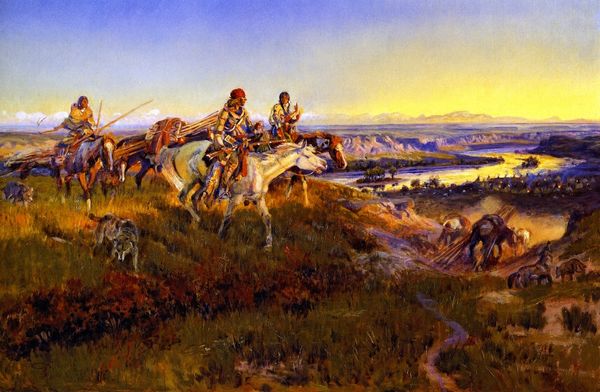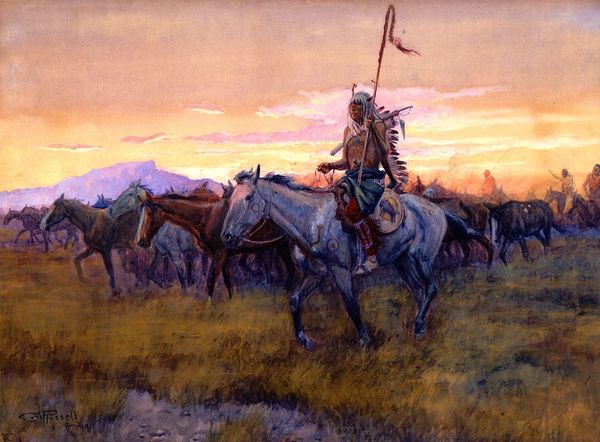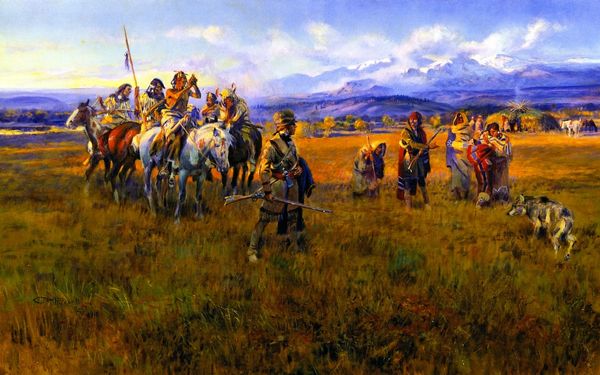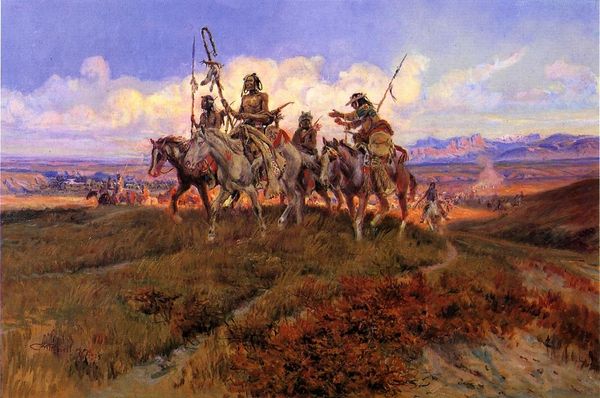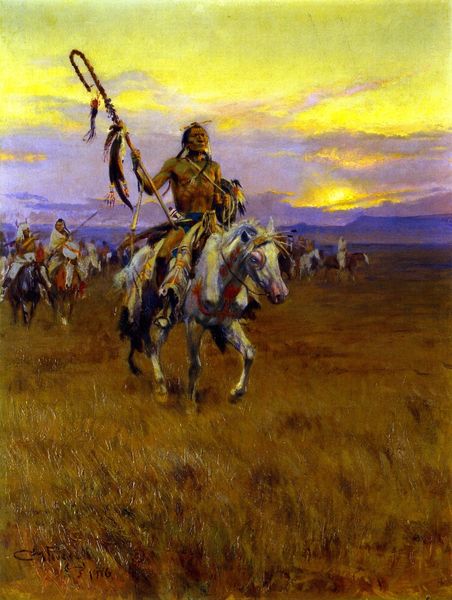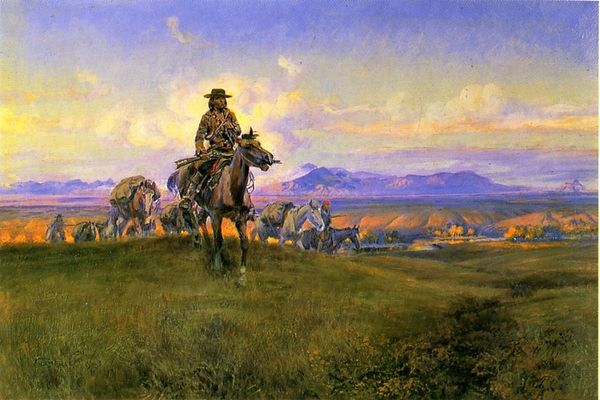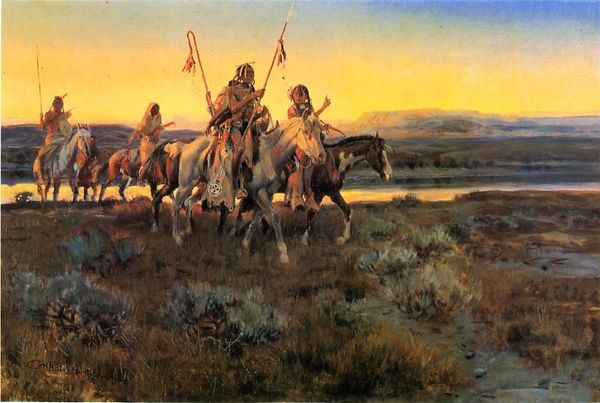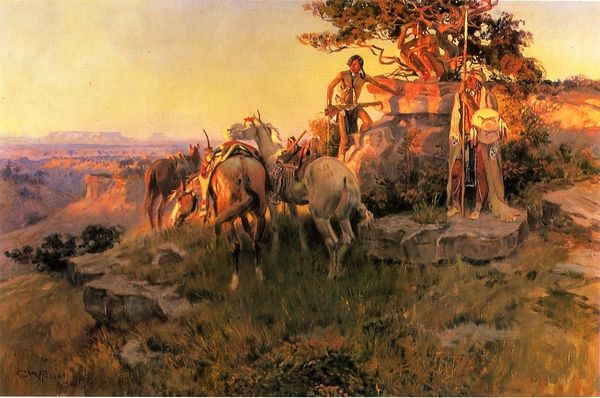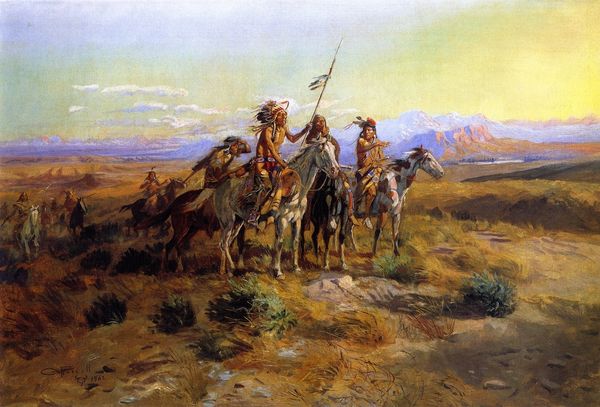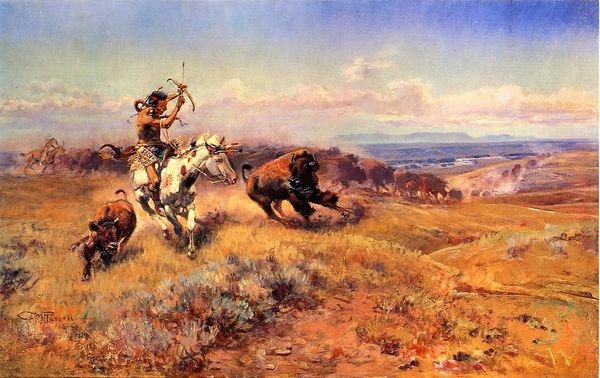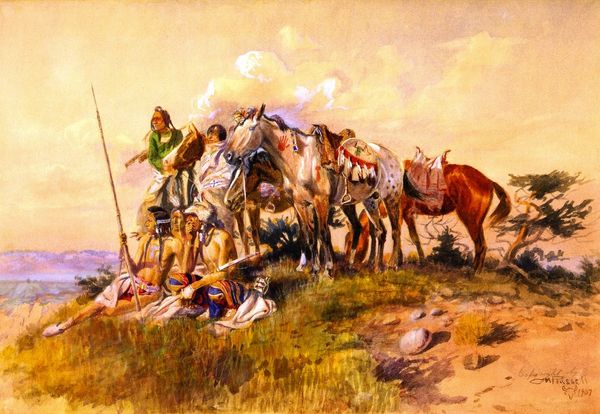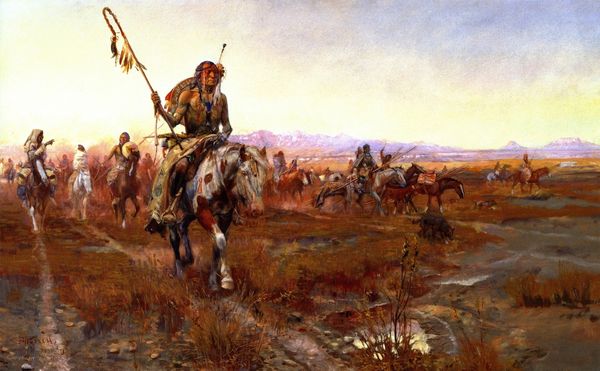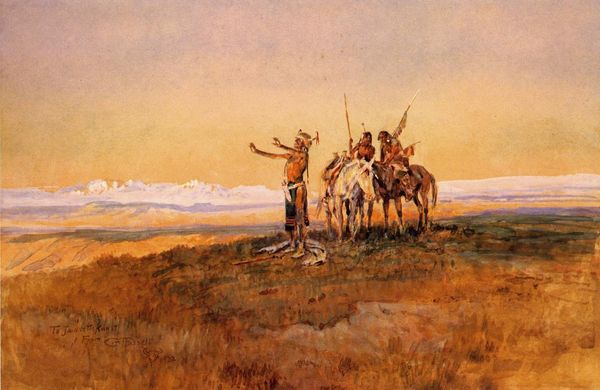
painting, oil-paint
#
painting
#
impressionist painting style
#
oil-paint
#
landscape
#
impressionist landscape
#
figuration
#
possibly oil pastel
Copyright: Public domain
Editor: Charles Russell’s “Wagons,” painted in 1921, appears to be oil on canvas. The way he depicts the riders and the landscape has such a soft, almost romantic glow. How do you read this piece? Curator: Considering the materiality of “Wagons,” I find myself drawn to the tension between romanticism and the harsh realities of westward expansion. Look at the texture—the visible brushstrokes in the sky. What do they tell us about the labor of painting this landscape versus the labor of traversing it? Editor: That's a great point. The idyllic scenery almost hides the struggles of life on the frontier. Are you saying the very act of painting changes our understanding of the landscape itself? Curator: Precisely. Oil paint, readily available at this time, transforms lived experiences into marketable commodities. Consider who Russell's audience might have been, what their expectations were of a “Western” painting, and what materials he employed to construct that imagery. Editor: So the canvas and the paint themselves are participating in a dialogue about labor and consumption, almost overshadowing the romantic narrative? Curator: Absolutely. The painting becomes less about what's depicted, and more about how that depiction was constructed. The artist's labor, the materials chosen, the intended consumer – these are all critical components that often get overlooked. How does the 'authenticity' of the depicted culture play into the artist’s chosen materials and techniques? Editor: I see! By focusing on the materials and their journey, you reveal so much about the work’s social and economic context. I'll never look at a landscape painting the same way again! Curator: That’s the beauty of a materialist lens: it opens up new avenues for understanding. We move beyond mere representation and towards a richer comprehension of the work's place in history.
Comments
No comments
Be the first to comment and join the conversation on the ultimate creative platform.
